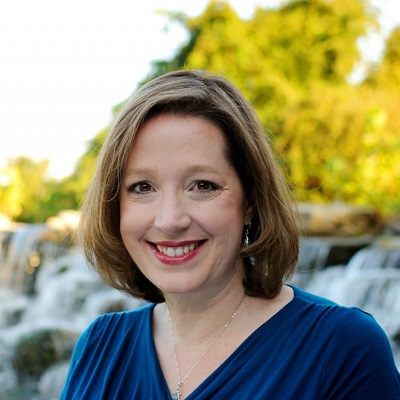Business Spotlight: Q&A with Michelle and Ken Ramus
Michelle and Ken Ramus are a husband and wife team who run their quilting business, MK Quilting, in the Calgary/ Southern Alberta region of Canada. We sat down with them to learn more about how they got their start, how APQS machines contribute to their success and how they work together in the business.
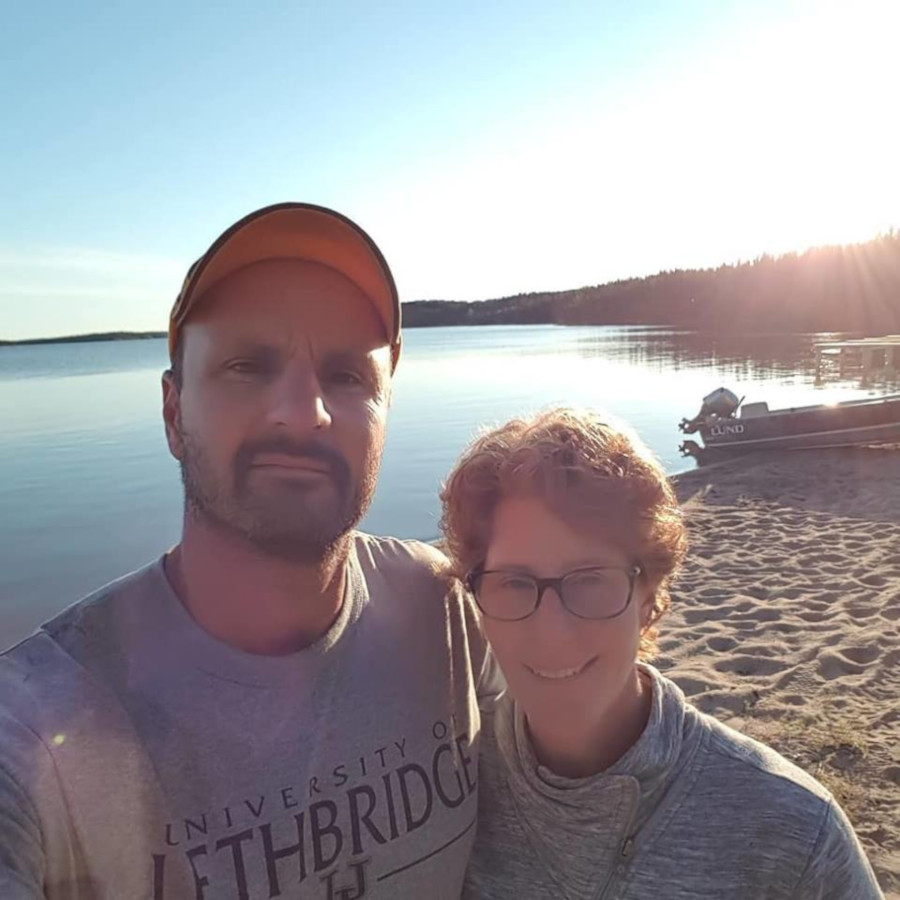
How did you get your start quilting for other people?
Our priorities changed with the birth of our first grandchild, Keegan. We wanted to be an active part of his life. Michelle was working full-time in the dental industry while I was the owner/operator of a construction company. Being a quilter most of her life, Michelle began considering quilting as a way to turn her passion into a profession. We took the leap and bought our first long-arm quilting machine, squashing it into the basement between the TV and the couch.
We began honing our skills on charity quilts and our own pieced tops before accepting our first official job two weeks later! Although it was for Michelle’s mother it was nerve-wracking all the same! Through word of mouth we started finishing more and more customer quilts, building our individual techniques and confidence. Soon after, Michelle left the dental industry to pursue long-arm quilting full-time, and would never trade the time she’s gained with her grandchildren.
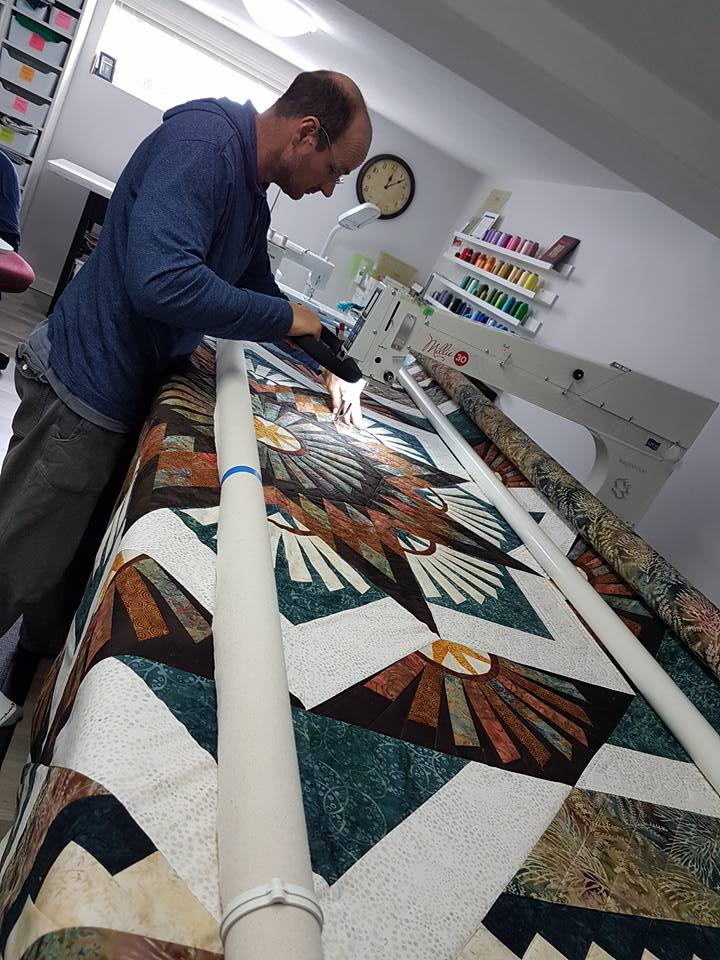
What types of quilting do you do most often for your customers?
Michelle does most of the panto work and some of the light custom. Ken does almost all of the custom work and a few pantos.
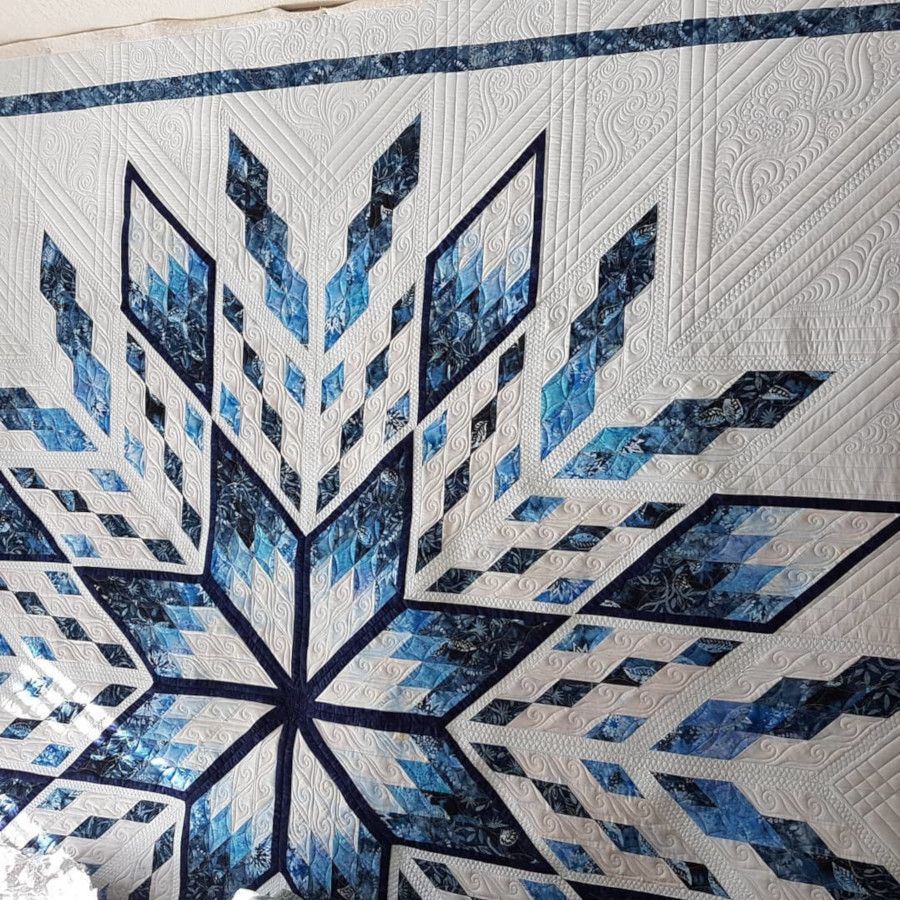
What longarm machine do you use in your business and why did you choose it?
We both have APQS longarm quilting machines because of the service, durability, and the way they are professionally built and engineered. Our first machine was Lenni, because it was a bit smaller and easier to use. Once Ken started quilting we realized we needed more throat space and a heavier machine.
Now, Michelle works on Lucey and Ken works on the Millie 30. Neither machine has a computer. Michelle chose her machine based on feel and fit. It was the lightest, smoothest, and easiest to maneuver, feeling really comfortable right away. Ken chose his machine because it’s beautiful. The type of quilting he does requires the largest throat space you could get.
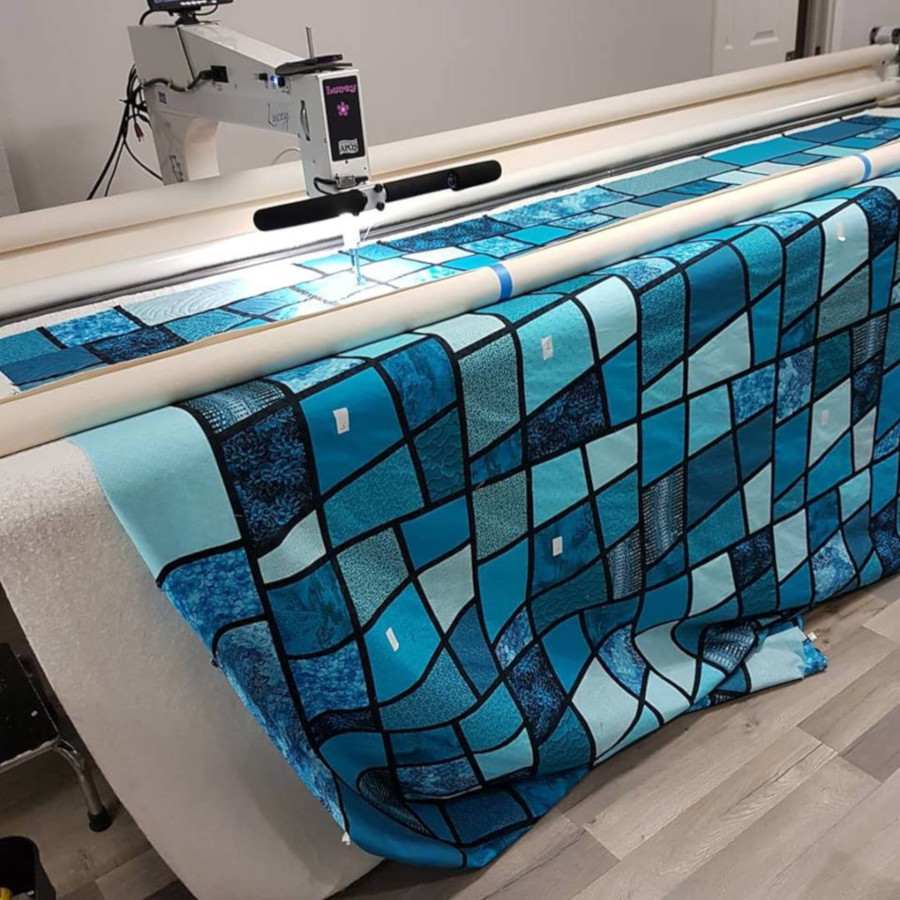
What is your favorite batting?
Warm and Natural, because it’s 100% cotton and has great long lasting durability and it’s warm. We like it for our personal quilts too because it’s a bit more weighted and our preference for sleeping.
What is your favorite thread?
We both like Fil-TEC’s Glide. It has a great sheen and doesn’t break often.
What is you favorite ruler or gadget right now?
Ken’s favorite ruler is the straight line ruler because he feels a straight line is one of the hardest things to do, believe it or not. Ken’s favorite gadget is the quilt glide button on his APQS machine. Michelle’s favorite gadget is the Scoop foot because it literally glides over all surfaces of the quilt regardless of how many seam/fabric layers there are.
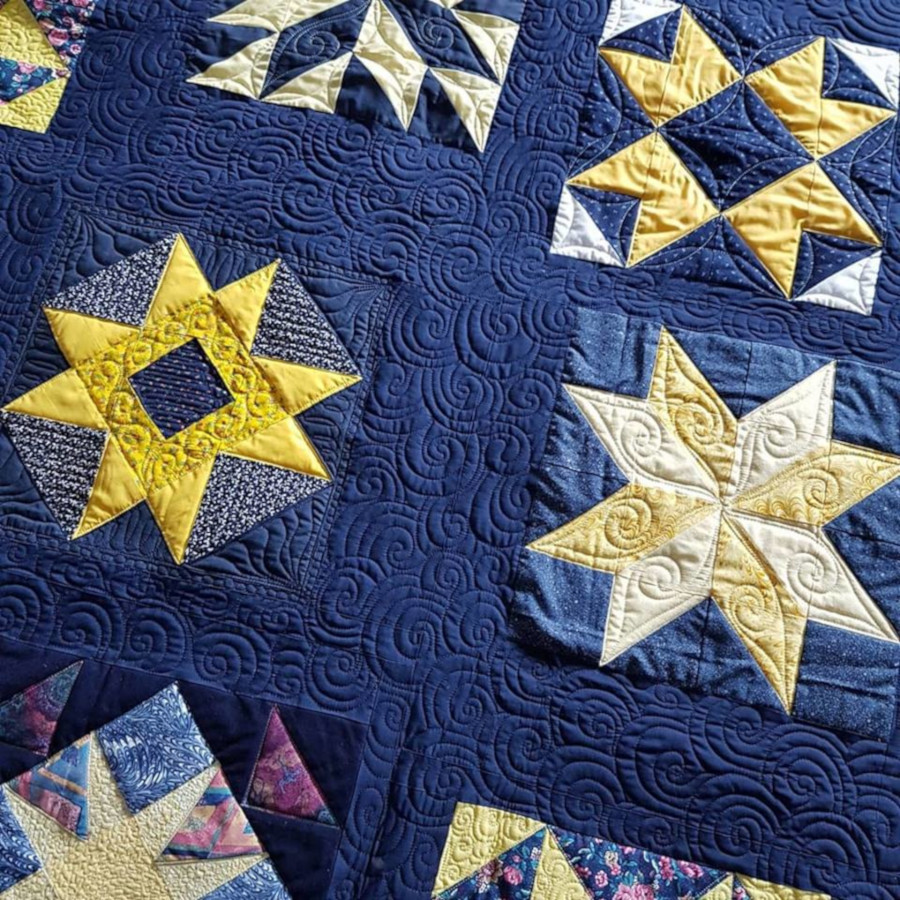
What percentage of your customers are local and what percentage of folks mail you quilts? Which do you prefer?
We do accept mail-in quilts but 99 percent of our customer base is from the local Calgary/Southern Alberta area. The foundation of our business is the relationships we build with our clients and hearing their stories. Every quilt comes with a story and by having that face-to-face consultation we can build those personal stories into the project.
Describe your longarm studio and how you organize it.
As our family has grown and evolved and our oldest daughter moved out, Ken was able to use his construction expertise to completely renovate the basement and turnit into a bright and functional studio with well thought-out work spaces, and plenty of visible shelving for fabric. Both machines have sufficient room to work around. We incorporated a 9-foot cutting table and two separate piecing areas, a batting room, and a customer quilt storage area. We have wall shelves for patterns and thread and plenty of shelving for projects on the go. We are no longer squashed in and we incorporated a sitting room for relaxing with a show at the end of the day.
Do you use an accounting software of some sort to keep track of your invoices?
We use an Excel spreadsheet to track expenses. All of our invoicing and customer lists are done on paper (we’re kind of old school that way). The invoices end up with all kinds of personal notes about quilts on them!
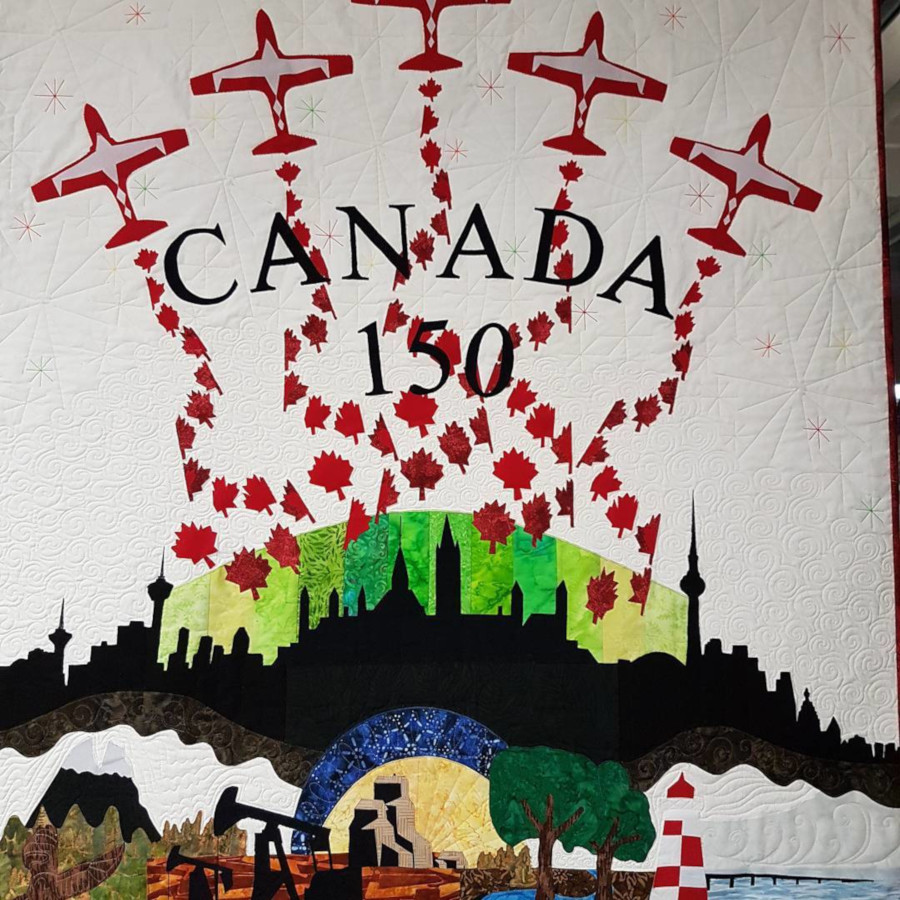
What is the best thing about quilting for others?
By far the best thing about quilting for others is the fact that we get to help them finish what they started and see the joy it brings them. We get to take the story of the quilt and finish it. It may sound corny, but it is exactly that. We feel that a big part of our role and responsibility as longarm quilters is to help our clients choose a pattern or custom design that best represents their style and personality and the style and personality of their quilt and bring it all together with exemplary quilting. We treat every quilt like it is our own.
What is a downside to quilting for others?
The downside of quilting for others is letting the quilts go! We can both get really attached to the quilts. Also, the more our reputation grows, the less time we get for quilting our own quilts, but that is a good problem! The only real downside is that we wish we could have the quilts done for the clients by the next day, but since it’s only the two of us, and the quality of work we do takes time.
What advice would you give to someone who is thinking of starting a longarm quilting business?
Ken’s advice is to find the best machine that fits you, practice your technique, and love what you do. The quilting world is like a family, and when you love what you do and do it well people will find you. Michelle’s advice is don’t be afraid to put yourself out there. Don’t be afraid to work on a quilt, just start, you don’t have to be perfect, when it’s all said and done it will be nice.
What do you wish you knew now about running your business that you didn’t know before?
Two years ago we tried a storefront in one of the local farmer’s markets and made some connections to some great customers, but the storefront tied us down and kept us from quilting. Our business comes from repeat customers and references. Being on Facebook and Instagram creates value and security for new clients, so posting and updating the sites are worth the time investment.
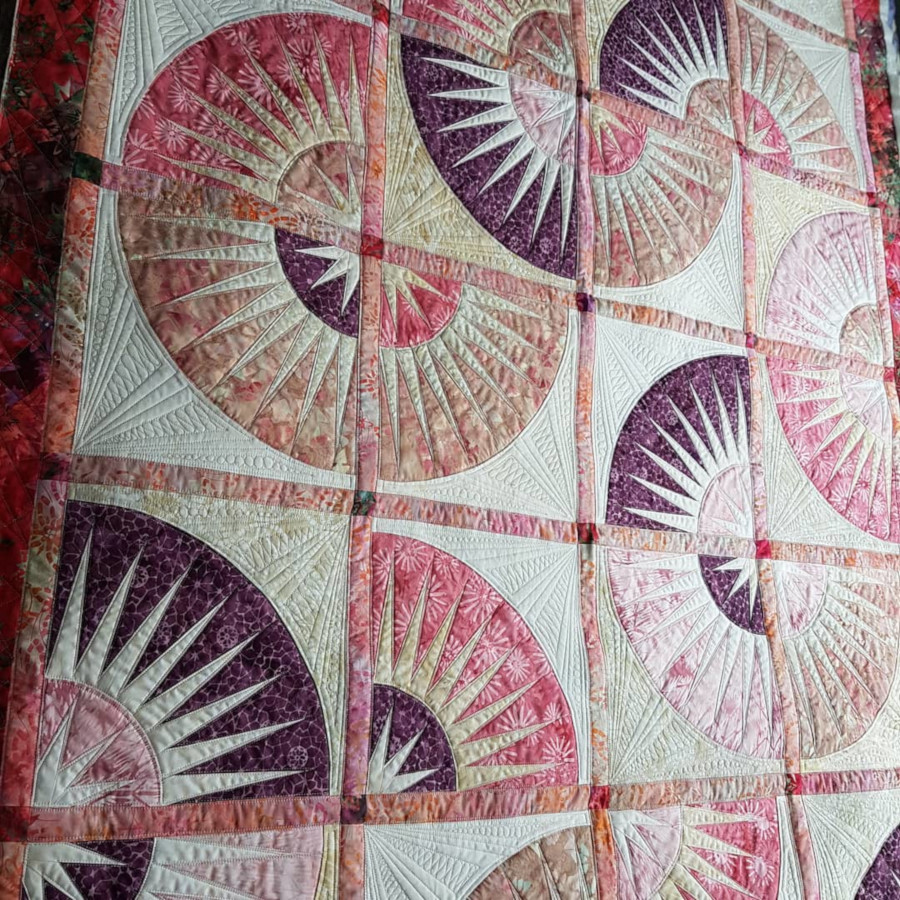
What is something you wish you had in your longarm studio to make things easier?
We both wish we had a batting table/cutter. It would make balancing, holding the ruler and cutting easier.
Is there anything else you’d like our readers to know about your business or about the machine quilting business in general?
Every day is a learning experience. Michelle took a risk leaving her full-time job and hasn’t regretted it. Michelle likes that people are coming into her home, and it doesn’t matter if the floor is swept or the dishes are put away. People come to share their quilts, see the grand-babies, and share their story. You never know when business will arrive. Today a client messaged, asking if we were home and dropped by with a quilt. We are both happy to make a living doing what we love.
Thanks, Ken and Michelle! Check out MK Quilting on Instagram and Facebook!

